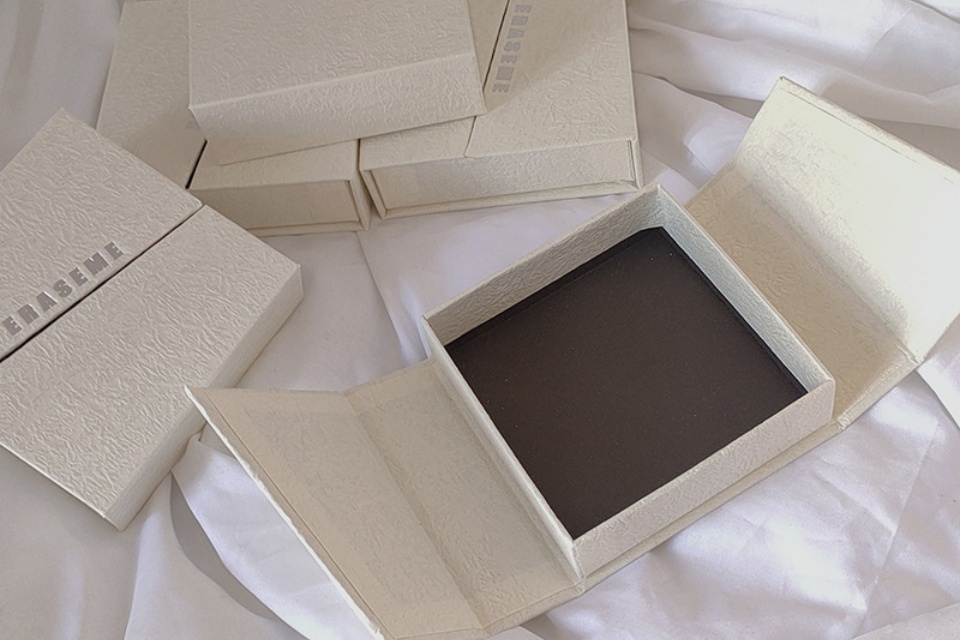Trends In Electronics Packaging Design
Trends In Electronics Packaging Design
Summary
Trends in Electronics Packaging Design refers to the evolving methodologies, materials, and technologies utilized in the packaging of electronic components and devices. This field has gained prominence due to the increasing miniaturization of electronic devices, heightened consumer demand for sustainability, and the rapid advancement of smart technologies. Notable trends include the integration of Internet of Things (IoT) features into packaging, the use of advanced materials such as bioplastics, and the adoption of innovative production methods like 3D printing, all aimed at enhancing functionality and reducing environmental impact.
Historically, electronics packaging has transformed significantly since the mid-20th century, driven by the need for improved performance, reliability, and cost-effectiveness in electronic devices. Pioneering packaging types emerged in the 1960s and 1970s, laying the groundwork for contemporary designs. Today, the industry faces pressing challenges related to thermal management, material selection, and regulatory compliance, particularly in light of growing environmental concerns and e-waste issues.
As the market evolves, the electronics packaging design sector is also grappling with controversies surrounding the sustainability of materials and practices. Regulatory pressures are intensifying, urging manufacturers to seek eco-friendly alternatives and minimize waste. Furthermore, the rise of smart packaging technologies, which enhance supply chain transparency and consumer engagement, raises questions about data privacy and security.
Looking forward, the future of electronics packaging design is set to be shaped by advancements in nanotechnology, AI, and circular economy principles, emphasizing resource efficiency and sustainable practices. As manufacturers adapt to changing consumer preferences and regulatory landscapes, innovations in this field will play a critical role in ensuring the functionality, reliability, and environmental responsibility of electronic products in an increasingly interconnected world.
Historical Context
The evolution of electronics packaging has undergone significant transformation since its inception, closely linked to advancements in technology and materials science. Beginning shortly after World War II, the electronics industry saw the development of core packaging techniques that set the foundation for modern practices. This period marked the introduction of various packaging types, including TO packages in the 1960s and DIPs and early PGAs in the 1970s, which laid the groundwork for the dominance of QFPs and other sophisticated packaging solutions in subsequent decades.
The journey of product innovation in the electronics sector can be traced back to pivotal inventions, such as Alexander Graham Bell's patent for the telegraphy in 1876 and John F. Mitchell's creation of the first handheld cell phone in 1973. These milestones exemplify how product development has evolved through a complex interdependence of technologies, materials, and design methods. The advancements in semiconductor technology have particularly influenced packaging design, driving the need for diverse and collaborative design teams that incorporate a range of technical and business disciplines.
As the industry continued to grow, so did the importance of packaging in ensuring device performance and market competitiveness. The flexibility and adaptability of packaging design became crucial, as engineers began to recognize the necessity of accommodating future upgrades and modifications without the need for complete redesigns. Consequently, innovations in packaging technologies not only addressed functionality but also focused on sustainability and cost-effectiveness, aligning with broader environmental concerns.
Current Trends
The field of electronics packaging design is rapidly evolving, influenced by advancements in technology and changing consumer demands. One of the most significant trends is miniaturization, which is essential for the integration of electronic components into smaller devices. This trend is driven by the need for more compact and efficient designs in various applications, particularly in the healthcare and automotive industries, where space is often limited. Innovations in nanotechnology, such as nanonet sensors and forksheet FETs, have enabled the creation of smaller components while maintaining high performance and reliability.
Additionally, the rise of smart and connected devices is reshaping the consumer electronics landscape. The proliferation of smartphones, wearables, and Internet of Things (IoT) devices has led to increased demand for advanced semiconductor and IC packaging solutions that can accommodate their compact form factors while ensuring seamless connectivity. The industry is witnessing a shift toward packaging solutions that support these technologies, as well as a push for sustainable practices in packaging design to meet consumer expectations for environmental responsibility.
Another emerging trend is the integration of smart packaging technologies, which enhance the functionality of electronic packaging by enabling real-time monitoring and improved traceability throughout the supply chain. This not only helps brands provide better consumer insights but also encourages responsible disposal practices. Furthermore, the use of advanced materials and innovative design processes, such as 3D printing, is facilitating more efficient production methods and cost-effective solutions for electronics packaging.
As the demand for smaller, more efficient, and eco-friendly packaging solutions continues to grow, the electronics packaging design industry is expected to adapt and innovate to meet these challenges, paving the way for a more advanced and sustainable future.
Technologies Influencing Packaging Design
Technological advancements are significantly shaping the landscape of packaging design, particularly within the electronics sector. Various innovations are being utilized to enhance sustainability, efficiency, and functionality in packaging solutions.
IoT Integration in Packaging
The integration of Internet of Things (IoT) technologies into packaging solutions is enabling real-time monitoring and tracking throughout the supply chain. Sensors embedded within packaging can provide valuable data on various environmental factors, contributing to better quality control and logistics optimization. IoT-enabled smart packaging is becoming more connected, allowing for enhanced data sharing and automation, ultimately improving operational efficiency.
Role of Technology in Sustainable Packaging
Emerging technologies, such as data analytics and advanced software, are crucial in optimizing packaging design for sustainability. These tools enable companies to minimize material usage while ensuring adequate protection for products, leading to reduced environmental impact and cost savings over time. Moreover, the integration of 3D printing allows for rapid prototyping and customization, fostering the use of eco-friendly materials and facilitating quick adjustments to meet market demands.
Smart Packaging Innovations
Smart packaging technologies are becoming increasingly prevalent. Innovations like packaging sensors equipped with wireless communication capabilities (e.g., Bluetooth or Wi-Fi) enable remote monitoring and data transmission, providing critical information about products without physical access. This shift toward connectivity not only improves inventory management and quality control but also enhances the overall efficiency of the supply chain.
Online Packaging Solutions
The rise of online platforms for packaging design is transforming how companies approach sustainable packaging. These platforms facilitate the integration of design and production processes, enabling businesses to optimize packaging for both performance and environmental responsibility. Tools available through these platforms allow for the testing of biodegradable materials and promote the use of renewable resources, further supporting sustainable initiatives.
3D Printing and Additive Manufacturing
3D printing, or additive manufacturing, is revolutionizing packaging by allowing for on-demand production and customization. This technology reduces the need for large-scale inventories, leading to more efficient supply chain management and minimized waste. Furthermore, it enables rapid prototyping, allowing designers to iterate quickly on packaging concepts before mass production, thus saving time and costs.
Industry Applications
Consumer Electronics
The consumer electronics market is also witnessing a shift towards more sustainable packaging options. With increased consumer awareness about environmental issues, brands are investing in innovative packaging designs that not only protect products but also align with eco-friendly values. This trend has led to a rise in personalized packaging solutions, such as those that incorporate QR codes for enhanced user engagement and information access.
Overview of Industry Engagement
Electronics packaging design plays a critical role across various industries, influencing the development and functionality of electronic products. From healthcare to automotive and construction, innovative packaging solutions are essential to meet the specific demands of each sector. Companies like VTT are at the forefront, helping businesses find sustainable solutions tailored to their industry needs.
Healthcare Industry
In the healthcare sector, electronic packaging must meet stringent regulations while ensuring the safety and efficacy of medical devices. For instance, GE Healthcare collaborates with VTT to improve ecodesign practices and assess environmental impacts in their packaging processes. This partnership underscores the importance of integrating sustainability into healthcare technology, as consumer awareness about the environmental implications of medical devices continues to grow.
Automotive Sector
The automotive industry is increasingly adopting electronic packaging innovations to support the rapid advancement of electric and hybrid vehicles. This shift necessitates sophisticated packaging solutions that can accommodate a wide array of electronic components, such as sensors and processors. As the demand for reliable and efficient packaging grows, manufacturers are integrating advanced materials that provide durability while minimizing environmental impact.
Construction Industry
In construction, the emphasis on sustainable practices is reshaping how electronic components are packaged. Companies are exploring eco-friendly packaging solutions that reduce waste and utilize renewable materials, addressing consumer preferences for greener products. The construction industry is leveraging technology advancements to enhance packaging efficiency, reducing costs while promoting sustainability.
Trends and Future Directions
The integration of automation and advanced manufacturing processes, like additive manufacturing, is revolutionizing electronics packaging. Companies are deploying these technologies to minimize waste and optimize material usage, thereby enhancing sustainability. As consumer preferences continue to evolve, manufacturers are likely to invest in smart packaging solutions that adapt to market demands while reinforcing their commitment to sustainability.
Challenges in Electronics Packaging Design
The field of electronics packaging design faces numerous challenges that must be addressed to ensure optimal performance, reliability, and sustainability of electronic devices. These challenges encompass a range of technical, environmental, and regulatory factors that engineers and designers must navigate.
Thermal Management
One of the primary challenges in electronics packaging design is effective thermal management. Electronic components generate heat during operation, and if not properly managed, excessive heat can lead to performance issues or component failure. Engineers utilize various techniques, such as heat sinks, thermal pads, and fans, to dissipate heat and maintain optimal operating temperatures. The careful design of printed circuit board (PCB) layouts and the selection of heat conductive materials are essential in preventing overheating and ensuring device longevity. Additionally, simulation tools and computational fluid dynamics (CFD) analysis play a critical role in optimizing thermal performance and validating packaging designs through both computer modeling and real-world testing.
Material Selection
Another significant challenge is the selection of appropriate materials for packaging. Engineers must choose materials that possess ideal properties, such as thermal conductivity, electrical insulation, and mechanical strength. Common materials include plastics, metals, and ceramics, with each offering different advantages depending on the device's requirements. The transition towards more sustainable materials, such as bioplastics and recyclable monomaterials, is also influencing design choices as the industry grapples with environmental concerns related to traditional packaging materials like plastics.
Design for Manufacturability
The rapidly evolving electronics industry necessitates flexible and adaptable packaging designs to accommodate future advancements and changing specifications. This adaptability is crucial for ensuring that products can be updated or modified without necessitating a complete redesign, which can be both costly and time-consuming. Striking a balance between innovative design and manufacturability remains a critical challenge for packaging engineers.
Environmental and Regulatory Concerns
The growing awareness of environmental impacts associated with e-waste and conventional packaging materials has created additional challenges in electronics packaging design. Regulatory standards are increasingly dictating the need for sustainable practices, pushing manufacturers to explore eco-friendly alternatives and improve recycling processes. This shift towards sustainability not only addresses environmental concerns but also aligns with consumer preferences for more responsible packaging solutions. Consequently, the packaging industry must innovate continuously while adhering to regulatory guidelines to mitigate risks associated with hazardous materials and ensure public safety.
Industry Collaboration
Finally, the complexity of electronics packaging design has underscored the necessity for collaboration among various stakeholders, including material suppliers, equipment manufacturers, and designers. This interdisciplinary approach is vital for developing new materials and techniques that enhance packaging performance while addressing sustainability goals. The interaction between structural designers and machinery designers, for example, can yield innovative solutions that minimize waste and optimize functionality, ultimately overcoming many of the challenges currently faced in electronics packaging design.
Future Directions
The landscape of electronics packaging is rapidly evolving, driven by technological advancements, regulatory changes, and a growing commitment to sustainability.
Evolving Methodologies
As industries transition from an "application-based” to a “degradation-based" approach to reliability, there is a pressing need for packaging methodologies that support per-product health monitoring on a larger scale. This shift will enable manufacturers to assess a product's service lifetime and Remaining Useful Life (RUL) more effectively, aligning with the demands of next-generation electronics and mission-critical applications.
Sustainable Packaging Innovations
The future of electronics packaging will also be heavily influenced by the drive towards sustainability. Companies are increasingly investing in eco-friendly materials and practices, propelled by government regulations that promote biodegradable alternatives and recycling initiatives. For example, new policies limiting single-use plastics encourage the adoption of plant-based materials and innovative packaging solutions, such as compostable and recyclable options. By complying with these regulations, manufacturers not only enhance their brand reputation but also position themselves favorably within the sustainable finance market.
Circular Economy Principles
Adopting circular economy principles will play a crucial role in the future of electronics packaging. This approach emphasizes resource efficiency and waste reduction, encouraging collaboration among industry stakeholders to foster innovation. Companies that integrate sustainable practices can create more transparent supply chains and respond to the increasing consumer demand for responsible production.
Technological Advancements
Emerging technologies, such as nanotechnology, are set to revolutionize materials used in electronics packaging. These advancements will facilitate the development of lightweight, durable, and environmentally friendly materials with enhanced barrier properties. Moreover, the incorporation of AI in packaging design and supply chain management will optimize processes, improve operational efficiency, and enhance customer satisfaction.
Regulatory Influences
Future directions in electronics packaging will also be shaped by anticipated regulatory shifts. As governments enforce stricter guidelines to combat plastic waste, manufacturers will need to innovate their packaging strategies to comply. This adaptability not only ensures compliance but also highlights a commitment to environmental responsibility, appealing to eco-conscious consumers.



